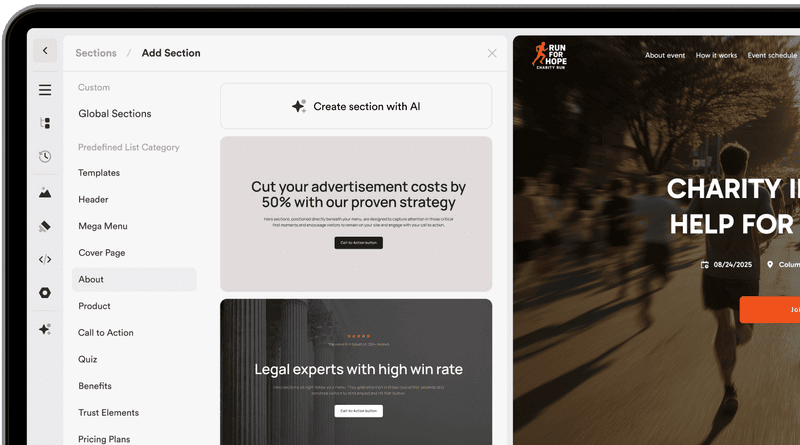April 10, 2023
Boost your social recruiting success: How to attract new talents through social media
A guide on how to create a successful social recruiting campaign and find the right employees
Boost your social recruiting success: How to attract new talents through social media
It's no secret that we are facing a shortage of skilled workers. The causes are diverse and complex, including demographic change, increasing global competition, and advancing digitization, which make it increasingly difficult to find and retain qualified professionals.
The effects are palpable, as job openings often go unfilled because conventional job advertisements no longer produce the desired results. Companies must therefore rethink and find new ways to attract the best talents for themselves.
Rethinking is necessary to attract suitable skilled workers.
A promising and relatively new way to attract skilled workers is social recruiting. A successful social recruiting campaign can help businesses leverage the potential of social media to attract and recruit qualified candidates.
The goal of social recruiting is to reach qualified candidates who may not actively be seeking jobs but are interested in new career opportunities. This can provide companies with a new way to recruit potential employees.
However, a successful social recruiting campaign requires careful planning and strategy. It's important to know the target audience and align the campaign accordingly. The type and quality of content, as well as the design of the ads, also play a crucial role. Therefore, it is important to consider some aspects to make your campaign successful.
In this blog post, we will show you the building blocks of a successful social recruiting campaign, what to consider, and how to create your own social recruiting campaign in only 7 steps.
Why recruit applicants through social media?

Many talented professionals already have a job and are not actively looking for new job openings. Therefore, it takes other ways to reach these talents because they do not frequent traditional platforms like "Indeed" or "StepStone".
Social media has become an important tool in recruitment in this context. Increasingly, companies are using platforms like LinkedIn, Facebook, or Twitter to attract qualified candidates. These social media platforms offer companies the opportunity to present their job offers in a new and attractive way, thus reaching potential candidates who are not active on traditional job portals.
But why is that?
On the one hand, social media offers tremendous reach. Most people spend a significant amount of their time online and also use social networks. This makes it easier for companies to disseminate their job offers to a large number of potential candidates. They can also target candidates who bring specific skills or qualifications.
Another advantage of social media in recruitment is the ability to build a strong employer brand. Companies can present themselves as an attractive employer on platforms like LinkedIn or Instagram, thus generating interest from potential candidates.
In addition, social recruiting campaigns are often more cost-effective than traditional recruitment methods. Instead of spending large sums on job advertisements in newspapers, job portals, or headhunters, the budget can be used for a targeted advertising campaign on social media.
Companies that use social recruiting have good chances of attracting the best talents in the "war of talents".
Step-by-Step guide to implement a social recruiting campaign:
Step 1: Define your target audience
Before launching your social recruiting campaign, it is crucial that you have a precisely understand of your target audience, especially when it comes to reaching talented candidates who are not actively present on popular job platforms.
To gain a better understanding of your target audience, these five key questions can help:
- What qualifications and skills do they possess?
- What are their reasons for changing jobs or staying in their current job? Here, security plays an important role, as many employees are hesitant to leave a secure job. Therefore, the potential employer must convey trust and security.
- Which social media platforms do they use most frequently?
- What do they want to achieve in their future job?
- Why is it worthwhile for the candidate to change jobs and come to your company?
In addition, it is important to find out where the employees you want to attract currently work and what fears and desires they have regarding their job. Once you have answered these questions, you can tailor your social recruiting campaign to your target audience and increase the success of your recruitment efforts.
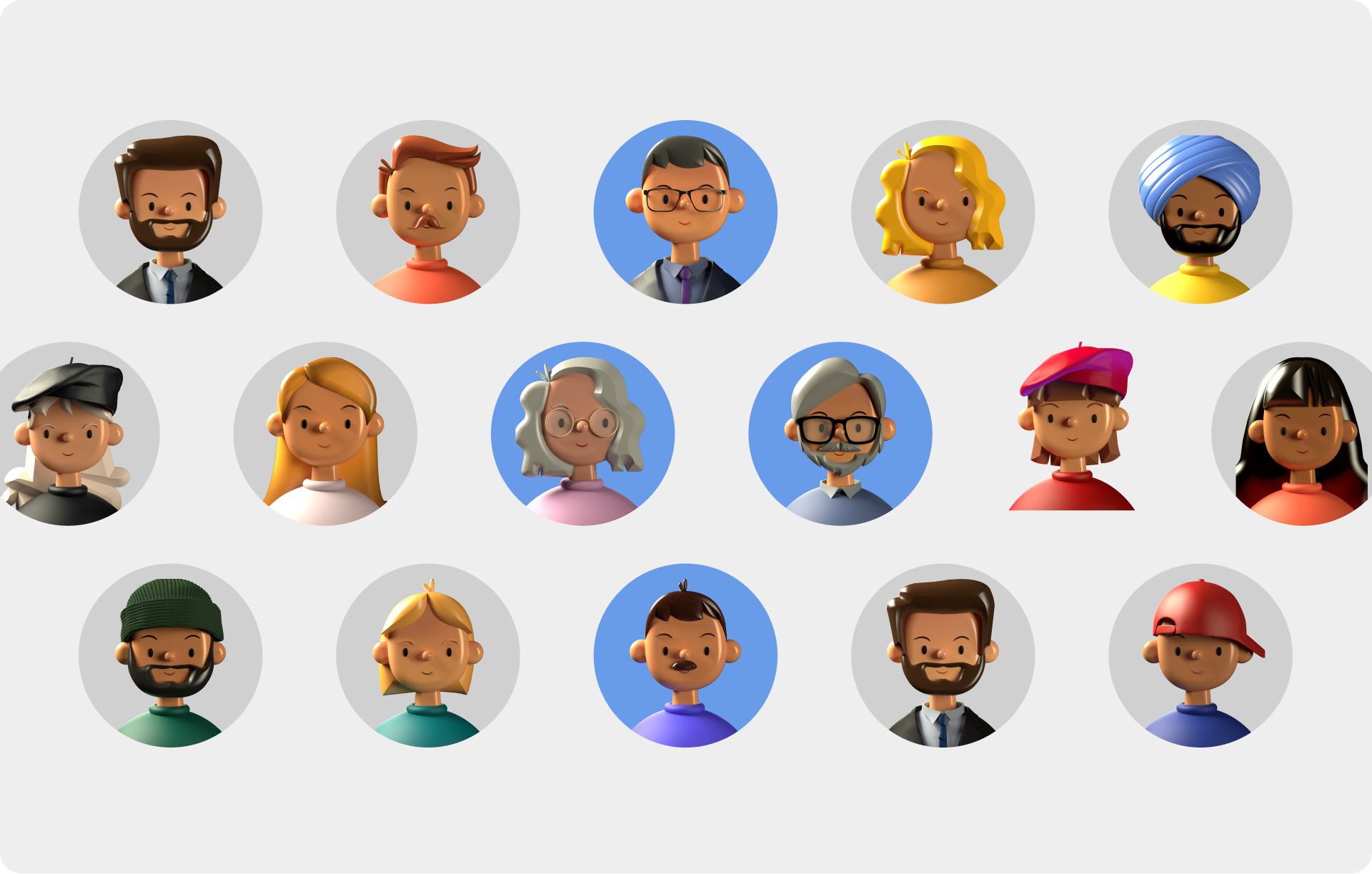
Understanding your target audience is an essential part of any successful social media recruiting campaign. When you know who your potential candidates are, you can hypothesize about their interests, values, and needs and use these insights in your recruitment process.
One way to apply this knowledge is to customize your social recruiting campaign to the needs and interests of your target audience. This increases the likelihood that potential candidates will notice your job postings and apply to your company.
In addition to the campaign, you can also use the insights gained to design your career site and job postings. By addressing the needs and interests of your target audience in a targeted manner, you can inspire potential candidates and boost your appeal as an employer.
Step 2: Choose the right social networks
There are various social media platforms that you can use for your social recruiting campaign. Which ones you should choose depends on your target audience.
For example, LinkedIn is a good choice if you want to recruit professionals, while Facebook or Instagram are better suited for a younger audience. Each position requires a different social media platform.
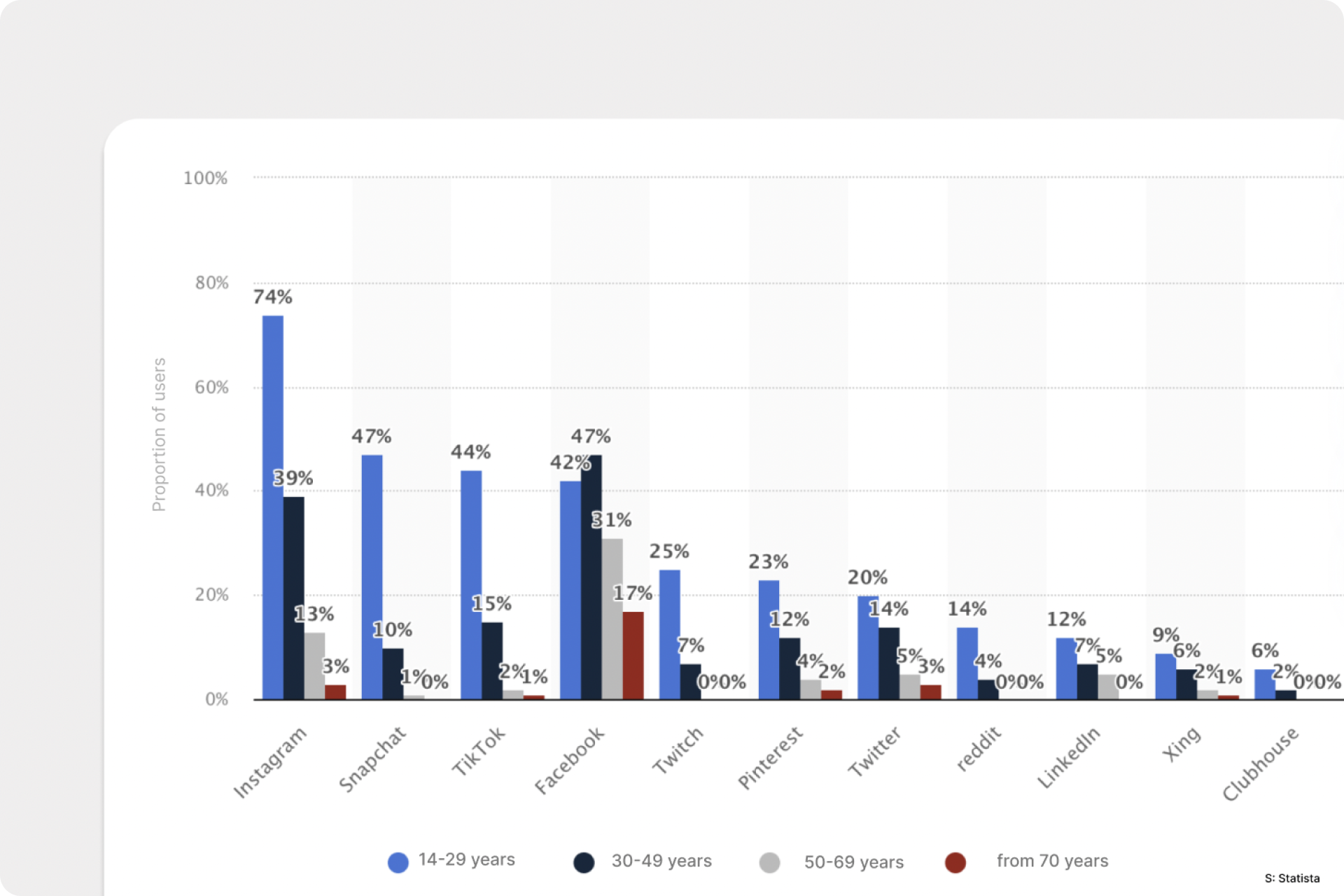
In addition to selecting the right platform, it is also important to have a clear strategy for your social recruiting campaign. Consider carefully which target audience you want to reach and what message you want to convey. A well-planned and targeted campaign can help attract qualified candidates and improve your company's image.
By selecting the appropriate social media platforms for your social recruiting, you can achieve greater reach and attract qualified applicants.
Step 3: Create compelling content
Just as important as selecting the right platform is the type of content you want to share on the different platforms. Creating compelling content is also a crucial part of a successful employer branding strategy. By publishing content on your social media channels that reflects your company culture and values, you can pique the interest of potential candidates and strengthen your company's image as an attractive employer.
These can be videos, images, or infographics, for example. Make sure to convince potential candidates that they want to be part of your team.
LinkedIn is suitable for job postings and career tips, while Instagram and Facebook are better suited for visual content such as images and videos that showcase the company and the work environment.
Utilizing storytelling is another way to make your content more engaging. People love stories and can better identify with your company and brand through them. For example, tell the story of an employee who started with you and now holds a leadership position. Or show how a project was implemented from start to finish and what challenges had to be overcome.
In addition to the content, you should also keep an eye on the frequency of your posts. Regular and consistent posts can help pique the interest of potential candidates and position your brand as an attractive employer. However, be careful not to post too often to avoid overwhelming or boring your target audience.

Step 4: Choosing the right tools for your recruiting site and recruiting funnel!
For every position you want to fill, you need a separate applicant landing page. By having a separate landing page, potential candidates can be targeted and guided through the application process. The landing page and the funnel can be created using Onepage.io.
The landing page is the first point of contact between potential candidates and your company. Therefore, it should be well-designed and clearly structured.
What information should you communicate on your recruiting landing page?
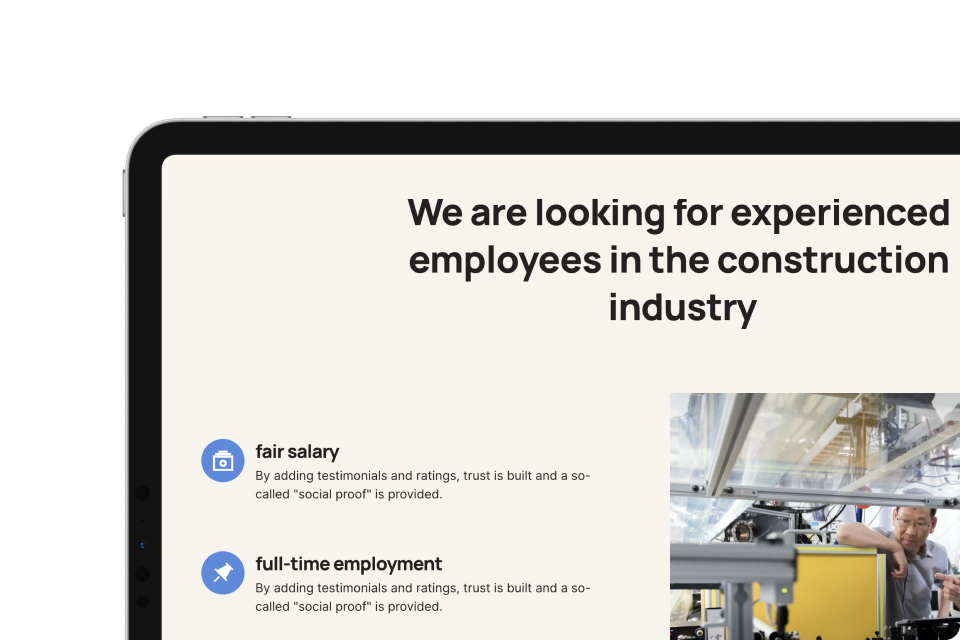
The landing page should provide important information about the position, benefits, and working conditions. The page should be long and detailed so that the candidate engages with the content. If there are not enough details on the page, there is a risk that the candidate will not be engaged enough and will abandon the application process. Call-to-action buttons are also important to encourage visitors to take further steps (e.g., apply now).
Don't be afraid that potential candidates will NOT be interested in your recruiting site.
When designing your application page, make sure that there is a so-called "values match." This means that the candidate should recognize what values your company stands for and can therefore assess for themselves whether they are a good fit for your company. Only if it is a good fit for both sides will the relationship be profitable in the long run.
For this reason, you should not be afraid to filter out unsuitable candidates through the information provided on your application page. A clear presentation of company values and culture can help attract candidates who really fit your company and identify with the values.
It is important that applicants get a sense of the company culture and values that are practiced in the company from your application page. This can be conveyed, for example, through pictures or employee testimonials.
The recruiting funnel
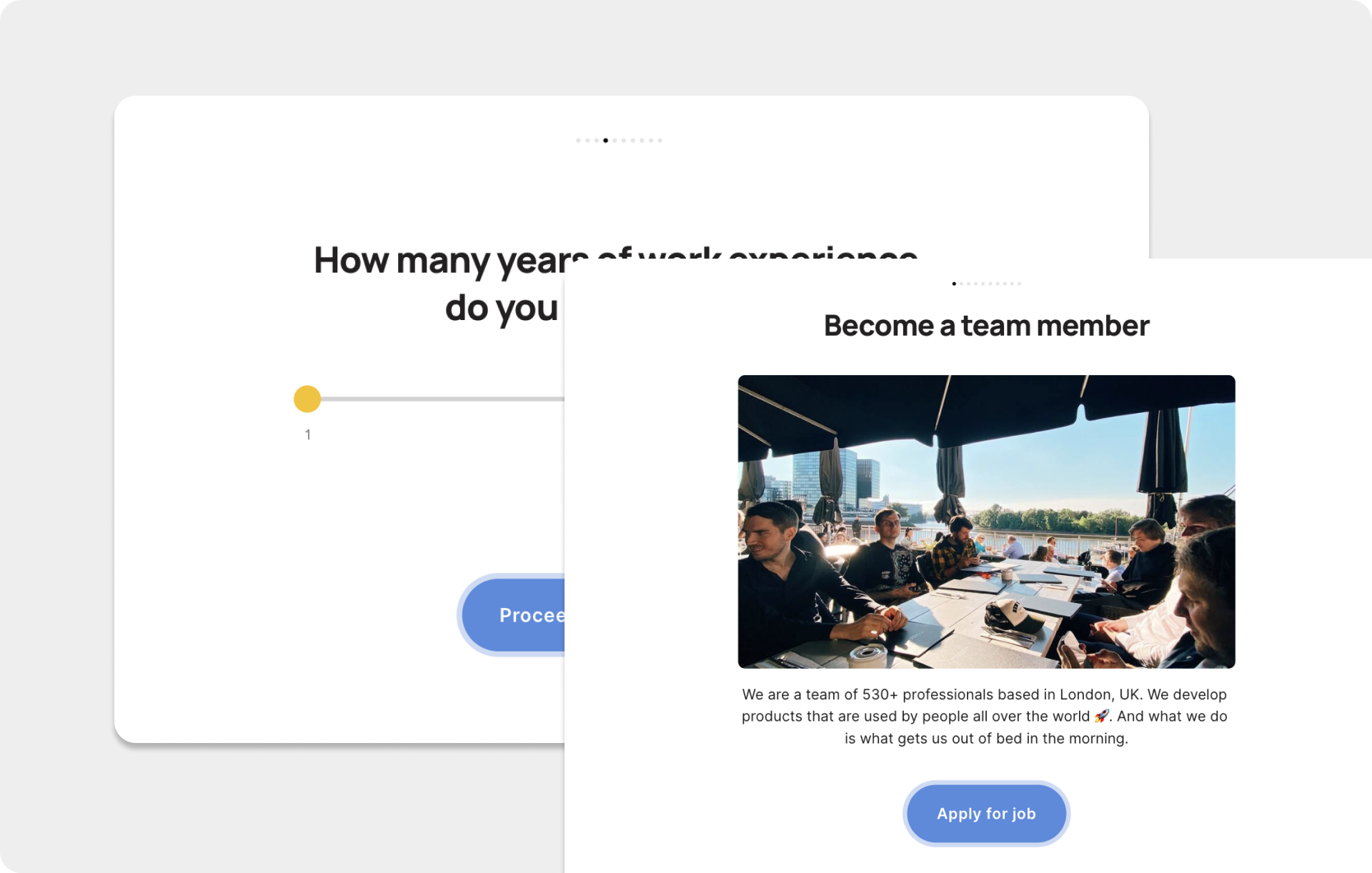
The recruiting funnel is an indispensable tool for social recruiting that helps you filter and qualify candidates. For example, you can ask specific questions about qualifications such as experience or education to reduce the number of applicants and only move the best candidates to the next phase of the process. This ensures that you only work with candidates who are best suited for the position and have the highest chances of being hired.
One way to increase the interest and engagement of potential candidates in a recruiting process is to use interactive quizzes. By using a question-and-answer method, you can build a dialogue with your target audience and actively involve them in the process.
Tip: Also read our blog post: "Create an online quiz: how to do it in just 5 easy steps”.
Individualization is the key to success
To find the best possible candidate for each position, you should customize your recruiting quiz and also your recruiting page. Different questions and content are relevant for applicants depending on the position.
This is especially true for the recruiting funnel, as specific requirements should be considered when searching for different positions. For example, if you are looking for a production worker, the question of willingness to work night shifts may be essential and should be included in your quiz. On the other hand, for an engineer, a relevant degree is essential and should be queried in your recruiting quiz.
Warning: Asking for a resume can be off-putting
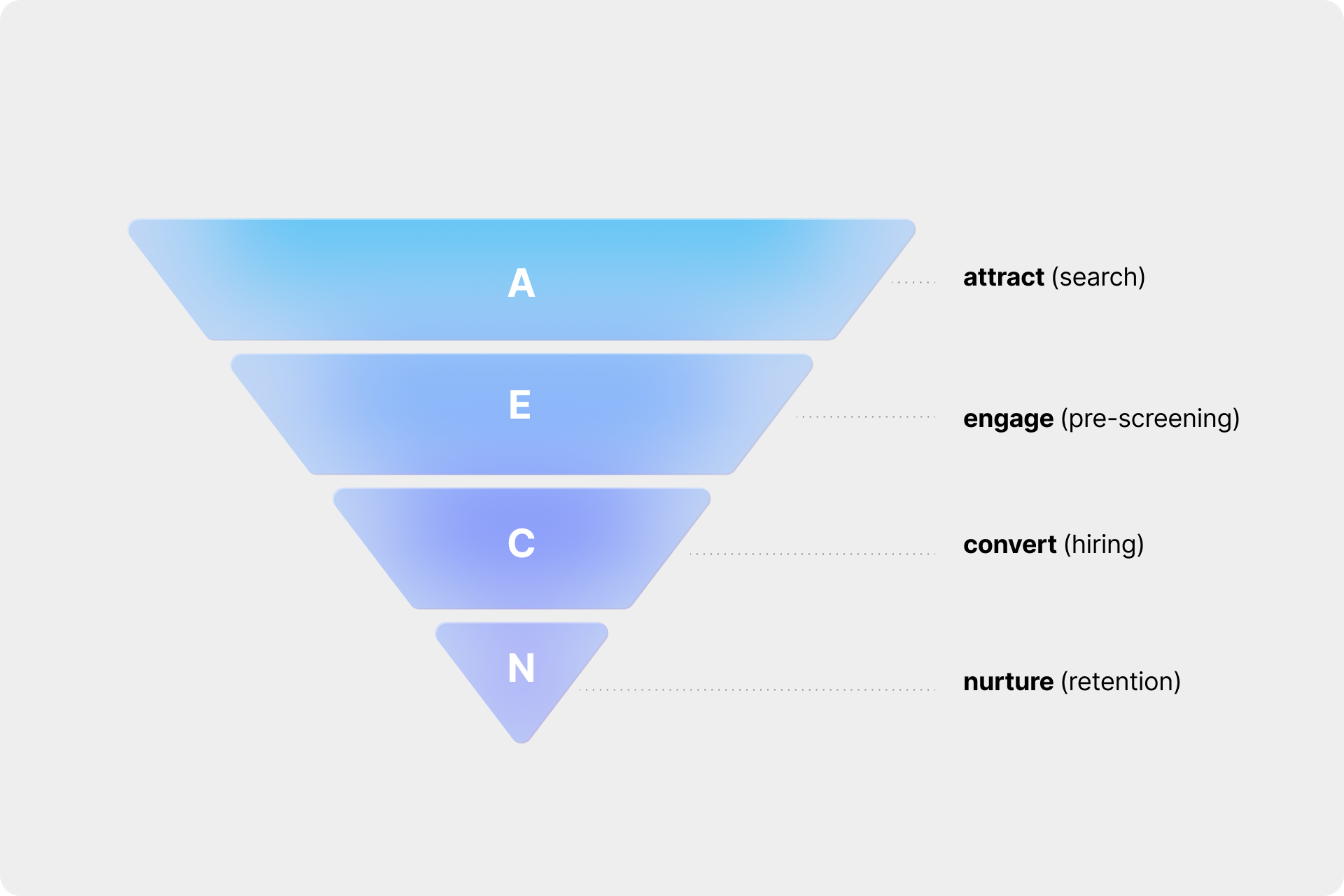
The multi-step funnel can serve as a supplement or even a replacement for the traditional resume. Most applicants who become aware of you through social recruiting campaigns are not actively seeking jobs and may not have an up-to-date resume at hand. Explicitly asking for a CV or even a cover letter can be off-putting. Instead, use the funnel to ask necessary questions and conditions. This way, you will likely get much more information than you would find in a traditional resume.
By using the multi-step funnel, you can save time and effort and make your recruiting process much more productive. Instead of inviting applicants to an interview based on inadequate information and only finding out there that they are not willing to work night shifts, for example, you can query important information in advance and only invite suitable candidates to apply.
Important: You can use Onepage to create this type of recruiting page and application process. With Onepage, you have the opportunity to create a page for your job posting that really convinces candidates. In addition, you can use the multi-step funnel to query all relevant information and optimize your application process. Countless recruiting agencies have already successfully implemented their social recruiting using Onepage.
Step 5: Use your ads
To draw attention to your recruiting funnel and recruiting page, you can place paid ads on social media. This allows you to target your campaign to your audience and attract potential candidates to your job openings.

But what should you consider when creating your ads?
A successful social recruiting campaign to attract potential employees via social media requires careful planning and execution. First, you should analyze your target audience and their preferred social media platforms. Based on this information, the content and design of the ads can be tailored to the needs and interests of your audience. You can follow these bullet points as a rough guide:
- Target Audience Analysis: Who do you want to reach and on which social media platforms are they active? By identifying your target audience and their preferred social media platforms, you can ensure that your ads are seen by the right people.
- Content: It is important that your ads contain meaningful information about your company, job openings, and success stories. This can help generate interest from potential candidates and persuade them to apply to your company.
- Ad Design: Your ads should have an appealing design and clear communication of the position, requirements, and benefits. A clear structure and a descriptive job description can help potential candidates get a better understanding of the advertised position.
- Targeted Audience Approach: By identifying potential candidates on social media, you can specifically address the right people. It is important to cater to the interests and needs of your target audience and adjust your ads accordingly.
Retargeting as a key success factor
But how can social recruiting campaigns be made even more effective? This is where retargeting comes into play. Through retargeting, candidates who have already clicked on your career page or one of your job postings can be approached again. This not only increases the likelihood that they will apply, but also that they actively engage with your company.
It is important to use retargeting strategically and selectively. For example, you could only target candidates who spent a certain amount of time on your career page or who were already in a certain stage of the application process. This way, you can ensure that the ads are truly relevant and interesting to the candidates.
Step 6: Engage with your target audience
A successful social recruiting campaign requires engagement. Use social media to connect with potential candidates and answer questions. Through this interaction, you can also gain insights into the interests and needs of your target audience and adjust your campaign accordingly.
In addition to answering questions, you can also include interactive elements such as live events or Q&A sessions. This can increase the engagement and attention of your target audience and give potential candidates a direct insight into the company and its culture.
Contact potential candidates as quickly as possible
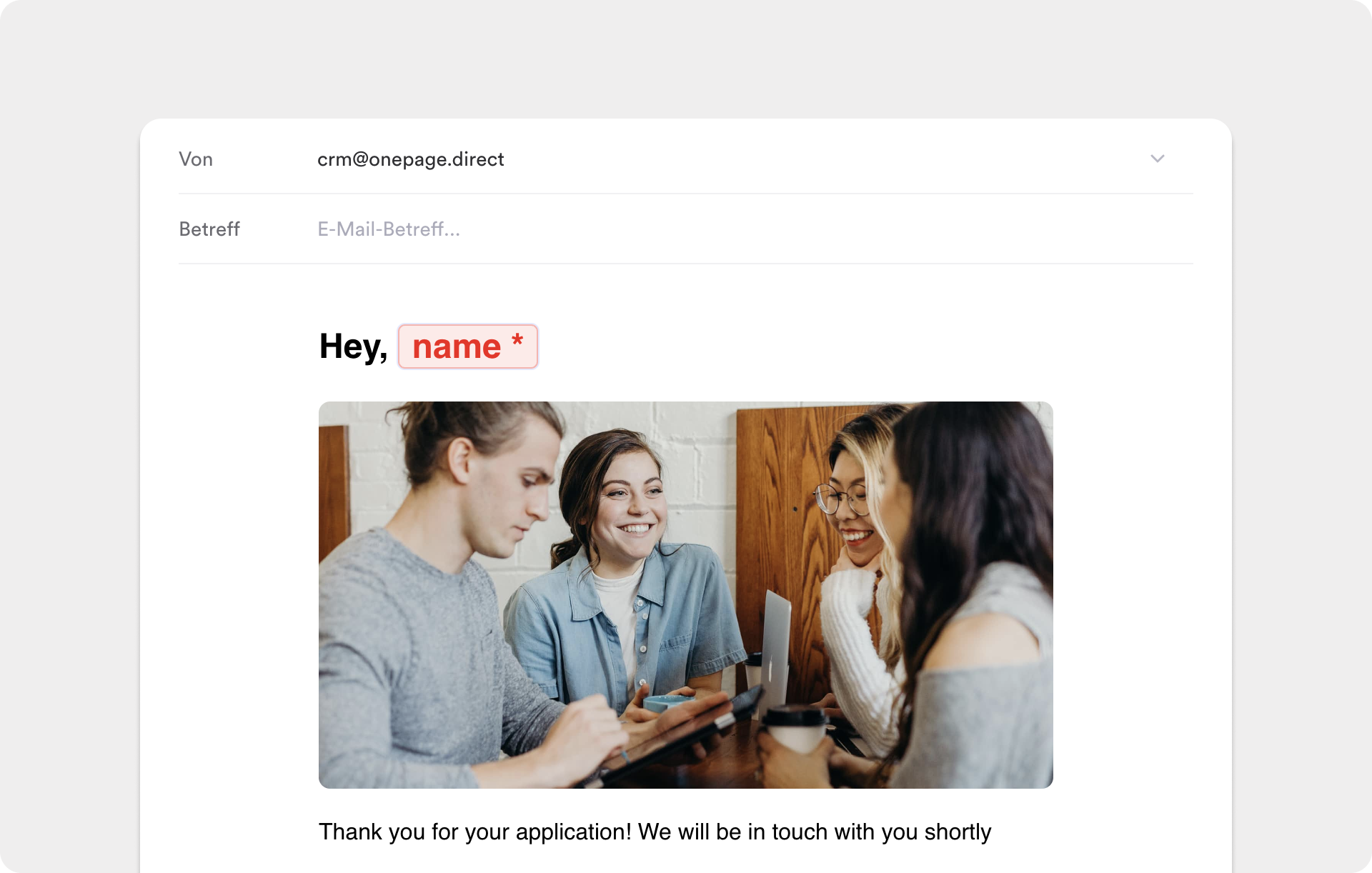
For social recruiting, it is particularly important that you contact the leads who have applied through your multi-step funnel as quickly as possible. Because the longer the wait, the more likely the candidate is to lose interest or be recruited by another company.
Therefore, companies should ensure that they have a fast and efficient follow-up system to contact applicants within a few days. Automated email or chatbot systems can help provide applicants with a quick and personalized response. At Onepage, for example, we offer you the possibility to send automated emails as a white-label solution to your leads with individual content as soon as they have successfully passed through the recruiting funnel.
Create a positive experience for the applicant
Furthermore, companies should also ensure that they provide clear information to applicants about the further application process. This can include information about the timeframe, next steps, and type of further communication. Tell applicants at the end of the funnel that you will call them within the next 48 hours.
By providing a fast follow-up and clear communication, you can maintain the interest of your applicants and create a positive experience with regard to the application process. This, in turn, can help attract potential candidates to collaborate with your company.
Step 7: Track and measure your results
Measuring and tracking results is a crucial factor in implementing social recruiting campaigns. Therefore, use analysis tools to see how well your recruiting campaign is working and which content is resonating with your audience. Based on these results, you can adjust and optimize your campaign to achieve the desired outcomes.
It is also important to keep an eye on conversions, that is, how many people who saw your campaign actually submitted an application. By tracking these numbers carefully, you can determine which aspects of your campaign are working well and which ones may need to be further optimized.
Onepage offers an integrated analytics tool that allows you to capture important data about visitors to your site. You can track how many potential applicants visited your site, where in the funnel drop-offs occurred, and how many conversions there were. Additionally, you can see whether your leads accessed your site via a mobile device or desktop and gain further valuable insights to help optimize your social recruiting campaign.
You can track how many applicants were actually invited to interviews and how many of them were ultimately hired. These data can help you determine the ROI of your social recruiting campaign and improve your strategy to attract qualified employees in the long term.
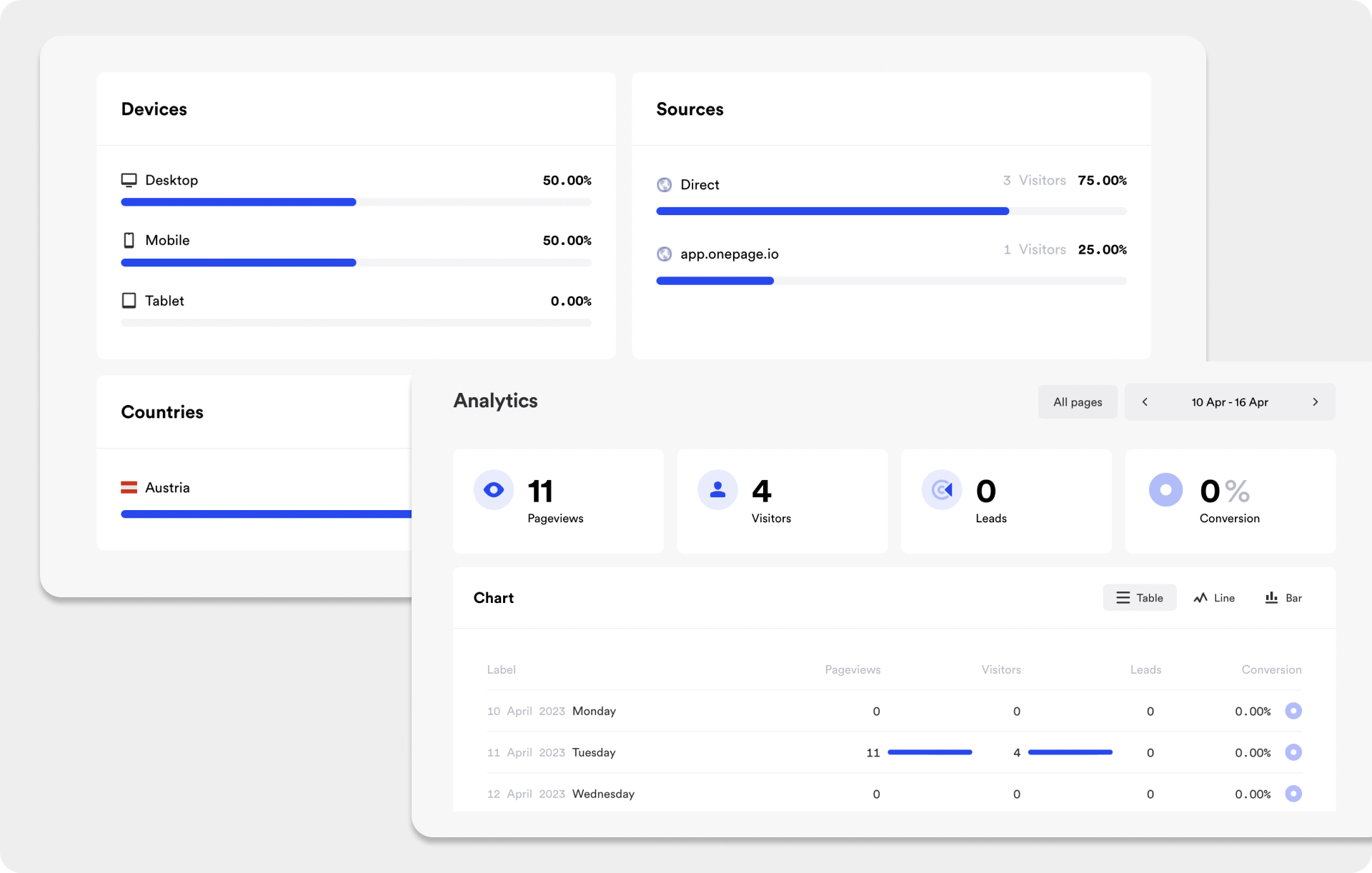
Conclusion for a successful social recruiting
A successful social recruiting campaign can help attract and recruit qualified candidates. By defining your target audience, selecting the right social media platforms, creating engaging content, utilizing ads, interacting with your audience, and tracking and measuring your results, you can ensure that your campaign is successful and achieves the desired outcomes.
Overall, social recruiting is an important part of the modern recruitment process and necessary to attract talent in today's competitive job market. By following these steps and targeting your campaign to your audience, you can attract the best talent for your company and achieve your recruiting goals.
Try it out for yourself and create your first recruiting landing page and funnel with Onepage. With our software, you can easily and quickly create your own page for free. Simply follow the link to sign up and maybe even publish your first recruiting campaign today!
Start with
Onepage for free.
It’s fast and enjoyable
Onepage is free to use. It’s not a trial version.
No credit card is required

